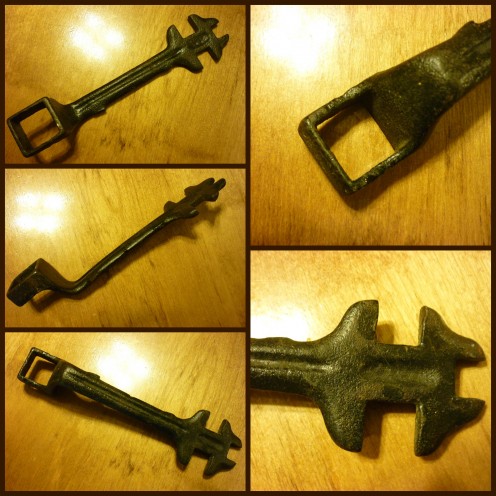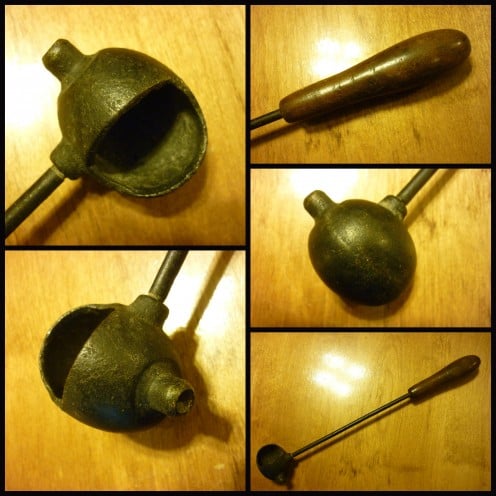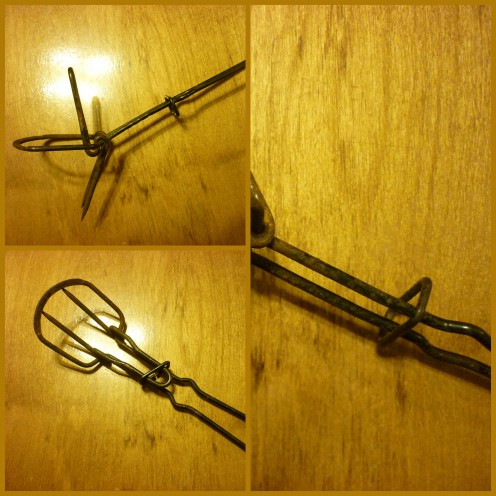Unique Tools for Camping, Wagons and Casting
Antique Tools
If you enjoy antiques or enjoy collecting tools the following are some interesting finds.
1800's Wrench

1800's Wrench
This is a 1800’s horse drawn buggy-carriage wrench. I located three companies that made this wrench. H. H. Babcock of Watertown, N. Y. who began making these “gears” in 1878. Eberhard Mfg. of Cleveland, Ohio who started business in 1879 and Dayton Mfg. who began remaking this tool-gear in 1949. I found information that lead me to believe that this tool was used for adjusting the steps and foot lifts on the buggies-carriages.
Dimensions of the wrench
- 8 ¼ inches in length
- 2 ¼ inches in width at widest point
- square end of the wrench is a 1 inch
- notches on the other end of the wrench are 7/16, 5/8 and 6/8 inches
- curve on the wrench is 2 inches
1925 Ladle

Smelting ladle-dipper
A Cast Iron Lead Alloy and wood smelting ladle-dipper. Lyman began making ammunition reloading products in 1925. This egg shaped ladle began showing up on the market around that time. There are smelting ladles that are marked Lyman, but the majority are unmarked. The egg shaped dipper and handle is screwed into each end of the stem. It has a wood ferrule shaped handle that has been stained.
Dimensions of ladle-dipper
- 12 ½ inches in length
- handle is 4 ½ inches in length
- 1 inch diameter at widest part
- cast iron ball shape is 1 ½ inches in diameter
- cast iron stem from handle to ball is 6 ½ inches in length
Casting bullets
This tool is used for casting bullets. The lead must first be cleaned and alloyed. Then taking the smelting ladle you dip into the ingot and pour it into the mold. This ladle is used on molds that yield several different bullets.
Fork

Fork
This last tool I have not been able to find another exactly like it. My research lead me to forks, tongs, clamps and crucibles for a similar item. There are several types of tongs; forge tongs, fire tongs, roofing tongs, laboratory tongs and possibly more. I checked lifting forks, campfire forks, roasting forks, toasting forks, BBQ forks and frying forks. The fork has two tines which is mostly used for cooking steak.
The dimensions of this tool is
- 8 5/8 inches in length and made of metal
- 2 2/8 inches in width at the widest part
- It has two tines that come to a point
- a clamp that closes over the tines and can be latched into place
- There are four levels of how tightly the clamp can be closed, each notch making the hold tighter.
Outdoor Cooking
Camping and cooking outdoors started in the 1920’s with the invention of charcoal, but became really popular during the 1940’s. It was a part of the post-war boom. With women entering the workforce and men needed to cook. During the war many soldiers had cooked on their government provided camping equipment. The charcoal grill was more obvious choice for men.
Hypothesis
My hypothesis is that this items is a vintage bacon small fire frying fork. I came to the conclusion of vintage because the fork lacks a wood or plastic handle. The handle tightens to a really thin clamp. Cooking bacon would be would be my guess. Small fire usage since the handle is short and the bacon would be extended over a fire. It has the appearance of a fork.
Unidentified Item
Two of these tools are cast iron and identifiable. One of the tools is metal and unidentified. All three tools are black in color. Each of these items are unique, because they are rarely seen. Unique items are fun to research. The history of these items is interesting. There are times when the item is no longer used.
I could use your help to identify this item? Please leave your comments or hypothesis’.








